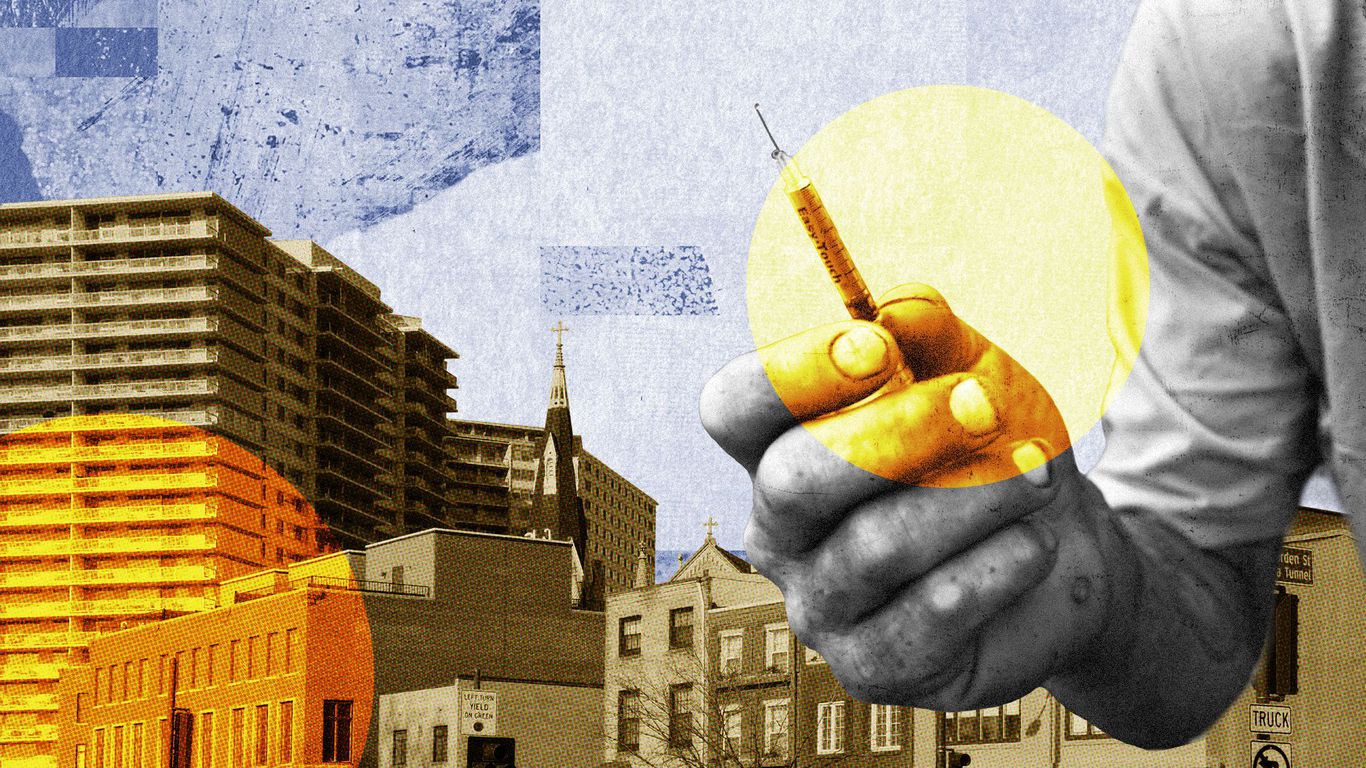Philadelphia was once known for having the “purest heroin in the nation,” city health officials say, but now the city’s opioid supply has been overtaken by an animal tranquilizer linked to thousands of drug overdoses across the nation.
Why it matters: Xylazine, known on the streets as “tranq,” can be lethal, when mixed with heroin or fentanyl, and causes nasty wounds and sores that can result in amputations.
- Some are injecting the drug unwittingly, while others seek out the sedative to lengthen the high of traditional opioids, city health officials told Axios.
- Typically used for large animals, such as horses, xylazine is not approved by the Food and Drug Administration for human consumption. Overdose reversal drugs like naloxone won’t halt its effects.
Between the lines: Advocates say open sores and wounds can delay people from getting addiction treatment because many rehab facilities won’t accept anyone with untreated lesions for fear of spreading infectious diseases.
- “We’ve been jumping up and down about it for a year,” said Adam Al-Assad of Savage Sisters, which has been out in force at McPherson Park treating wounds at pop-up clinics. “There’s only so many people listening.”
State of play: First detected on the city streets about a decade ago, xylazine went dormant for years before making a vicious comeback, health officials said.
- The drug was first detected in fewer than 2% of fatal overdoses between 2010 and 2015, but that number rose to about 31% in 2019, according to a report from Philadelphia Department of Public Health researchers.
- It’s now showing up in about 93% of 625 dope samples tested since November 2020, city epidemiologists Jewell Johnson and Jennifer Shinefeld told Axios.
- Meanwhile, Shinefeld said anecdotally that soft-tissue infections and amputations are on the rise in the city.
The big picture: Kensington, the epicenter of the city’s opioid crisis, is considered the hub of the xylazine boom, health officials said.
- In 10 jurisdictions across the U.S., xylazine’s presence increased from 0.36% of overdose deaths in 2015 to 6.7% in 2020, Vice News reported, citing an April study in Drug and Alcohol Dependence.
- In Michigan, xylazine-involved deaths were up nearly 87% between 2019 and 2020, the Detroit Free Press reported.
- And in Maryland it was involved in 19% of all drug overdoses in 2021, and 10% in Connecticut the year before, the New York Post reported, citing the National Institute on Drug Abuse.
What they’re saying: Local drug traffickers use xylazine as a cutting agent to extend supplies of heroin and fentanyl, inspector Jamill Taylor, of the Philadelphia police narcotics unit, told Axios.
- It’s not a controlled substance, and can be legally purchased online, so police aren’t making large seizures.
- “It’s basically eating them alive,” Taylor said. “It causes them to rot from the inside out.”
Shawn Westfahl, an overdose prevention coordinator for Prevention Point, the city’s only needle exchange, told Axios the combination of xylazine and fentanyl can put a person to sleep for hours, making it harder to determine whether someone is experiencing an overdose.
- That also puts people at risk of suffocation should they fall asleep in the wrong position.
Westfahl has observed that some are becoming dependent on the xylazine-fentanyl combination and seeking out “tranq dope” as they experience withdrawal symptoms.
- The Kensington-based nonprofit’s wound clinic now predominantly treats those with wounds caused by tranq in the opioid supply, Westfahl said.
- “People are getting wounds that pop up in places where they never injected,” he said.
More Philadelphia stories
No stories could be found

